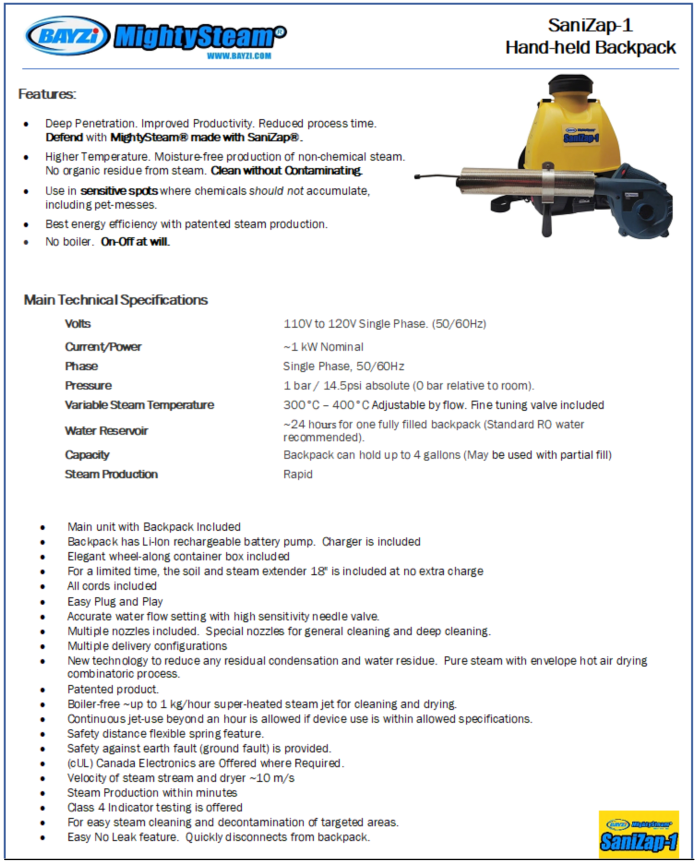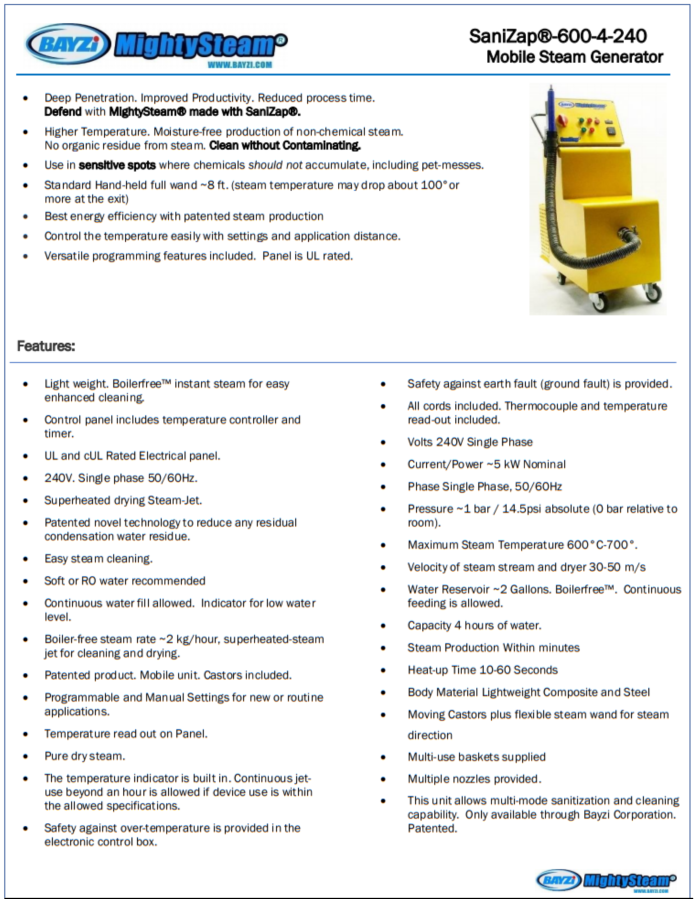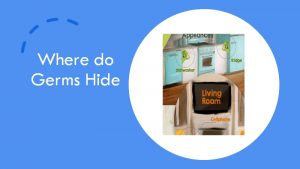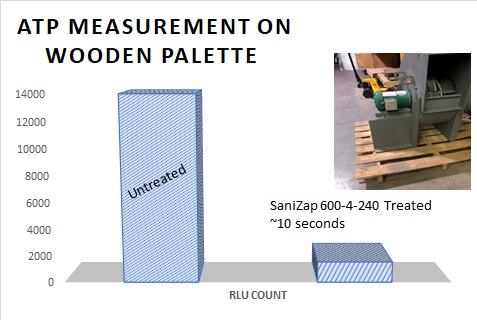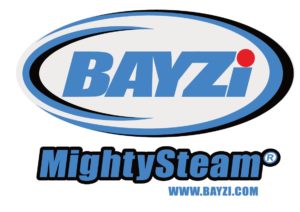The Covid-19 pandemic has created the need for frequent chemical-free sanitizing.
Enter the SaniZap® Solution!
Are you using chemical cleaners but are worried about using them too often? Concerned about about the chemical residues, odors, fumes, dust, allergens and side effects? Worried about exposing your family and pets to the chemicals? Worried if they are effective?
It is Simple – Antimicrobial Clean without Chemicals!
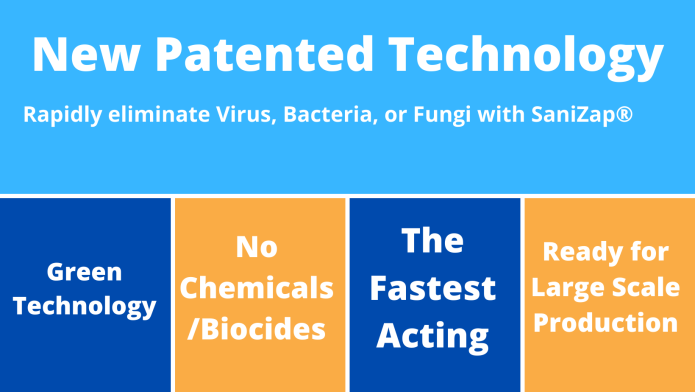
Eliminate wiping and waste. Save energy and time.
Imagine
Sterilization-level temperature and quality of steam is now possible for the first time with portable SaniZap® machines. No such products are presently available in the market. Hard-to-reach areas can now be easily and rapidly sanitized with openly directed steam.
Sanitize kitchens, bathrooms, furniture, doors, gyms, equipment, and many other areas and objects with two portable models. Use in schools, hospitals, restaurants and other high traffic areas. Reduce odors.
We tested prototypes, improved the products and are now ready for a major production launch. Back us and help us make this technology available to all!
SaniZap® models are in production since 2020.
Be an early adopter or please donate one to an organization of your choice!
The SaniZap-Mini is a handheld model with a One Gallon water pack for two hours of sanitizing. Easy to carry, or attach to belt or back harness.
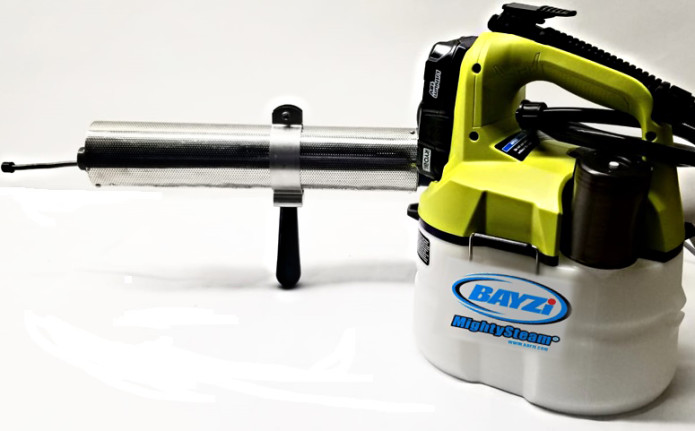
The SaniZap-1 is a handheld model allowing great flexibility for rapid sanitation. A 4 gallon backpack and accessories allow for 8 hours of steam sanitizing.
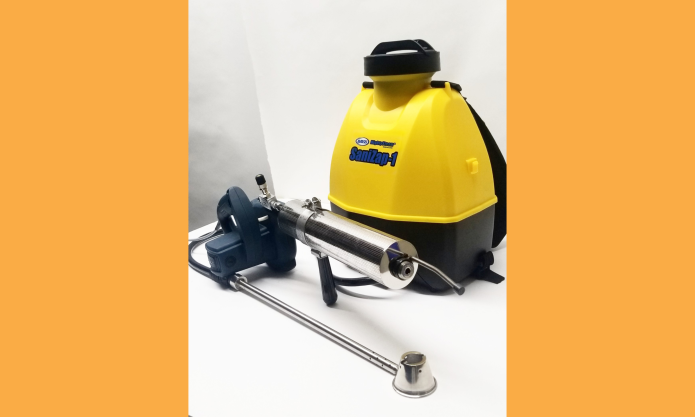
The Versatile SaniZap-600-4-240 is a higher power model on wheels. A workhorse. Great for cleaning companies, health and food companies, hospitals, nursing homes and other institutional use. Full automation, temperature selection and multi-mode cleaning.

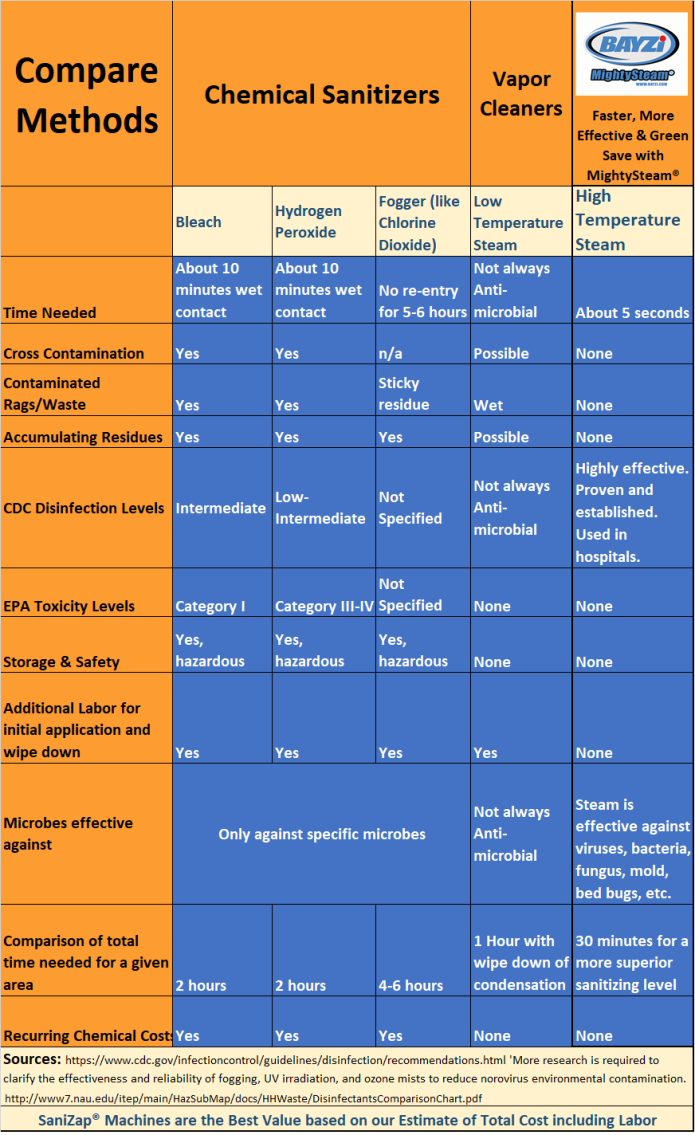
Our Story
Some years ago we had a water main pipe breakage at our company. The cleaning crew did a great job but we were never sure how clean the place was.
Being the experts we are with high temperature steam, we decided to pursue sterility level cleaning. The MightySteam® technology soon emerged as a new way to make instant steam that could eliminate any microbe within seconds.
Reliable portable models – SaniZap® solves this problem with cutting-edge, highly innovative products, covered by several patents.



Let’s Compare Steam with All Other Methods
Chemicals and UV present considerable dangers. These are well documented so can be easily searched on the web. The harm to humans is cumulative. Steam is the best solution as it is water based – so CLEAN by definition. However, it has to be the correct type of high temperature steam. This is the breakthrough technology that SaniZap® offers. The table below compares chemicals, low temperature carpet cleaning steam (vapor cleaners) and the SaniZap® antimicrobial steam.
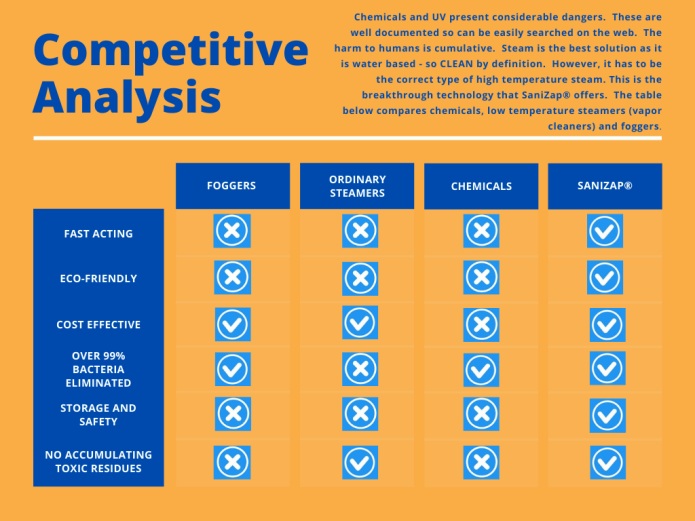
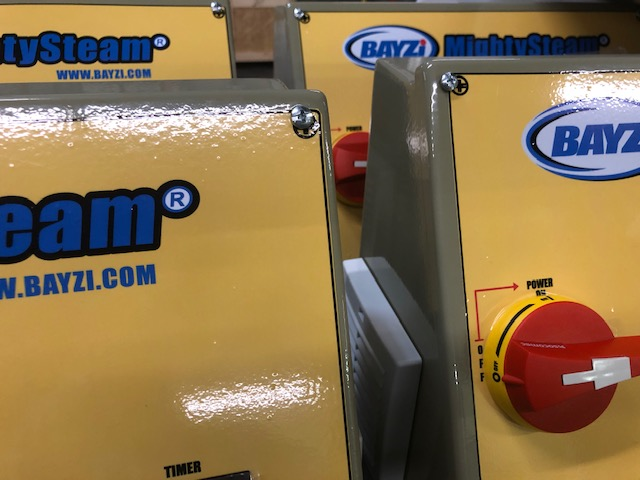
Do more with SaniZap® Steam
In addition to antimicrobial use, SaniZap® can be used for several levels of cleaning like removal of old dust, dust mites, bird droppings, rust, paint, wall-paper, grease removal, eliminating black mold and more. We recommend the SaniZap-600-4-240 model for all of that. This model also allows a soap/cleaning agent and high temperature steam setting for rapid degreasing, floor cleaning and similar use. Clean Anything from Soft to Hard Surfaces.
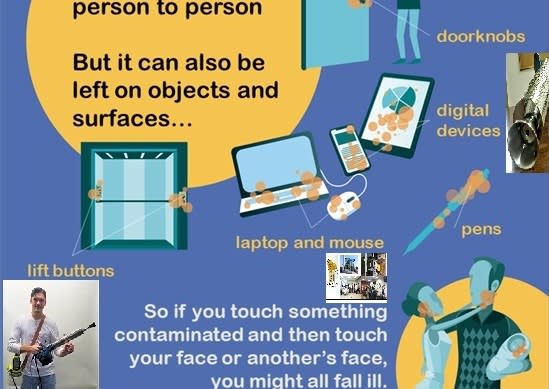
Sanitation and cleaning in the food industry means adequate treatment of food contact surfaces to destroy vegetative cells of microorganisms. SaniZap® steam is the solution.
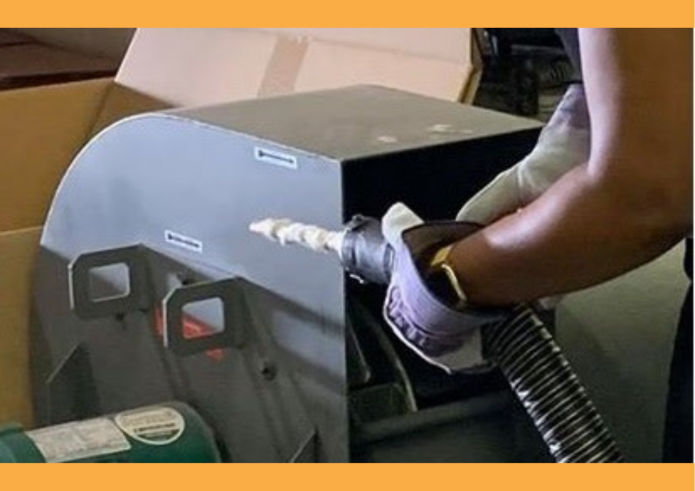

Steam – the Ultimate Microbe Buster
Superheated steam is a known anti-microbial agent and has been used for sterilizing for decades, but confined to autoclaves. Steam at the correct temperature and residence time is a rapid sanitizer. For the first time, the portable SaniZap® machines make even higher temperature steam than autoclaves possible, instantly. SaniZap® steam passes the important chemical indicator tests that autoclave have to (Class 4 and Class 6 indicators shown).
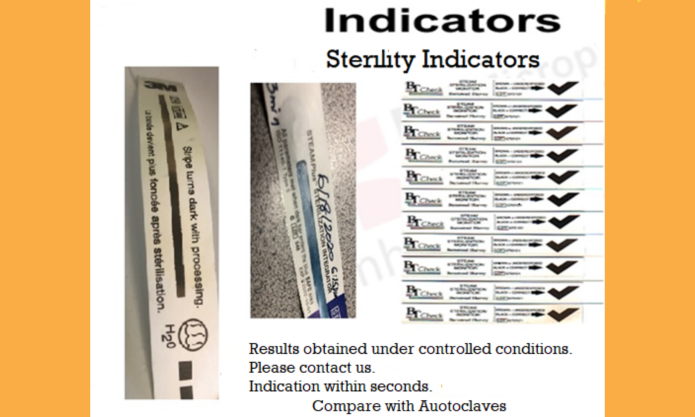
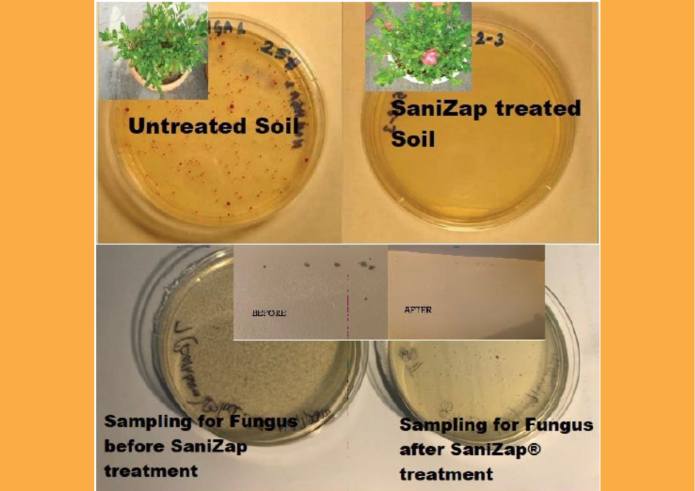

“Enveloped viruses such as SARS-CoV-2 and HIV can be readily inactivated with heat. The Bayzi Corporation target for employing high temperatures that are capable of inactivating viruses within a few seconds with steam appears to me to be highly likely to succeed.” Albert B. Sabin Professor and Director, Infectious Diseases, Cincinnati Children’s Hospital Medical Center
Bayzi has created a Science and Engineering team with experts from from Universities, Hospitals and EPA.

A brand-new technology platform for antimicrobial, antipathogen, and general cleaning to provide a green and healthy alternative to toxic chemical sanitizers.
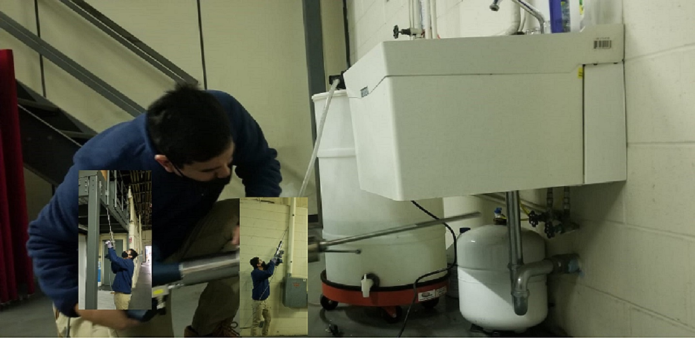
Compare the SaniZap® models

Why is SaniZap® Technology unique?
Differentiated
- SaniZap® requires no pressure to deliver the same steam quality as the traditional slow autoclaves (World War II era technology)
- Utilizes much less energy compared to autoclaves
- Open, directed, non-wetting steam sanitation is possible for the first time. If used properly, high sterility levels are anticipated.
Disruptive
- Ability to deliver high steam temperatures up to 600°C to kill new and resistant strains of micro-organisms.
- Rapid velocity
- Unusual steam quality. The first steam to self dry on impacting a surface.
- Based on published journal reports and other data, rapid antimicrobial efficacy is anticipated. Let us be prepared for possible future pandemics.
Defendable
- Patents (over four already allowed and several in the pipeline) will provide a sustainable competitive position.

“I have bought and used many steam cleaners. This is the only one I have real confidence in for cleaning bacteria.” -First impressions from a restaurant owner (formerly a nurse) who used the SaniZap prototype to deep-clean during the Coronavirus shut-down.
“I cannot give a more resounding thumbs-up for cleaning dust with antimicrobial steam. Our factory over the years had accumulated a lot of dust – and lots of dust mites. With the SaniZap 600-4-240 I was able to have all places easily dusted within a few hours. No sneezing, so I imagine it must have killed all the dust mites. I feel it is the best antimicrobial technique. All factories, laboratories and warehouses will benefit. We will be using it for years. Congratulations.”
“It’s quick. This is the best technique. Love it.” -The Leading US Thermal Materials Provider. Thank you for this device. December 2020
Awards and Press
Our most coveted awards are the testimonials we are receiving from people like you. These are listed on the web site Bayzi.com. “Love it” …. “feel safe” …”use it for everything” are typical responses from the Pilot 1 users. Bayzi has also been featured on:

Timeline
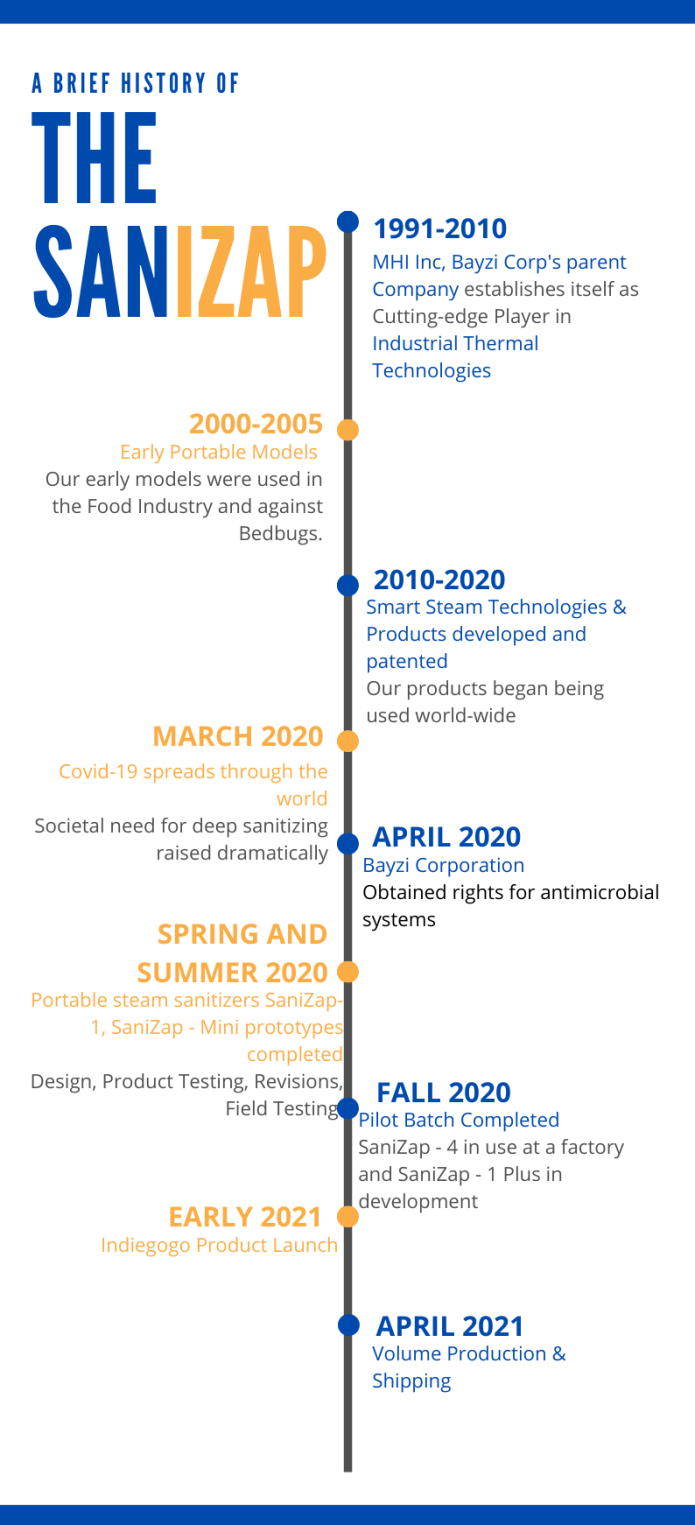
2020 and Beyond –Future Innovation Agenda
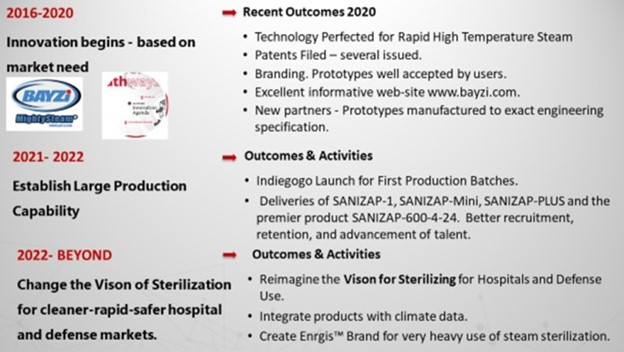
Based on Issued Patents and Registered Trademarks
- MightySteam® (Steam Sanitation Technology Platform)
- SaniZap® (Open Steam Cleaning Products)
- HealthySurface® (Service Trademark)
- Enrgis Sterlizers™ (Patent Issued Sterilizers)
- Permanently Antimicrobial Surfaces
The launch of the SaniZap® products at Bayzi Corporation (bayzi.com) is supported by the technology and patents from an established world leader in industrial thermal technology, Micropyretics Heaters International Inc. (mhi-inc.com).
Shipping
Ship out is expected to start in April 2021
Customer service: Email: [email protected]
What’s in the box?

SaniZap® 1 Accessory Kit
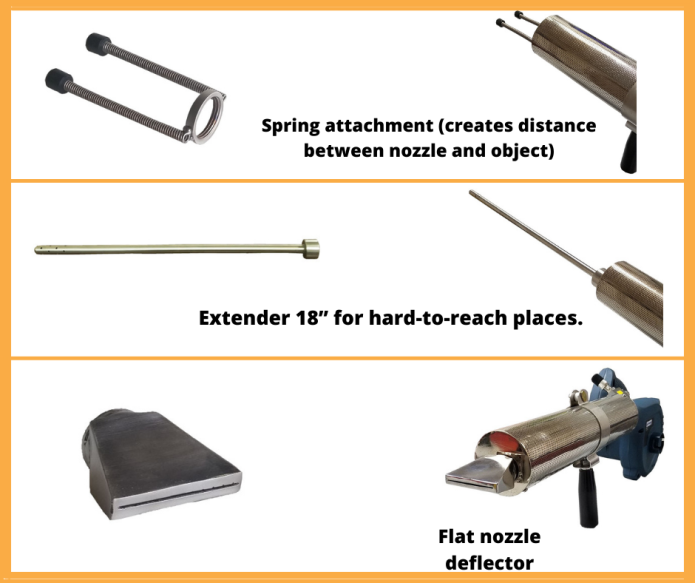
Frequently Asked Questions
What kinds of surfaces can be cleaned with the SaniZap®-1 and SaniZap®-600-4-240?
SaniZap® can be used on hard and most soft and porous surfaces. Use instructions will include recommendations for distance and time of exposure for different surfaces. Typical areas and objects include counters, faucets, door handles, furniture including fabric or leather surfaces, gym equipment, office equipment, stuffed animals, etc. Steam is the king of Sanitation.
What can SaniZap®-4 do that SaniZap®-1 cannot?
SaniZap®-1 is a I kW unit that can be plugged into the standard 110v outlet. It is handheld and can be used in hard to reach areas for antimicrobial sanitizing. The SaniZap®-4 is a 4 kW versatile workhorse on wheels with more power. It has more features like temperature control, timer, etc. and can be used for general cleaning, rapid dust and allergen removal, as well as for higher level of antimicrobial sanitizing. It is more suitable for institutional and large areas.
What is the warranty on the SaniZap®- device?
The SaniZap® units come with a standard one-year warranty against manufacturing defects.
What are typical maintenance procedures? Are there maintenance parts?
There are no special maintenance requirements other than use as recommended. Bayzi has a ‘NeverDown™’ Policy where replacement parts can be purchased for quick shipment. Bayzi can be reached by phone during working hours.
What is the ROI if I use these in my cleaning business?
It is estimated that at about 50 hours of sanitizing services provided per month, the SaniZap®–1 can be paid off within a month, and the SaniZap®–4 within 2 months at the introductory prices during the Indiegogo launch. Of course this depends on your business.
Can I finance the SaniZap®?
Yes. We have partnered with a financing company (go to Product Overview at Bayzi.com) to make this process easy. However, you can choose any financing company you wish. For the Indiegogo perks (lowest price) you may buy with a Paypal account or credit card.
How do I store the SaniZap® products?
SaniZap®-1 and SaniZap®-Mini come in their own wheeled boxes that can be stored in a closet or stowed. The SaniZap 600-4-240 can be wheeled into a closet or small space for storage.
How safe is to use this device around children and pets?
Since no chemicals are used, the SaniZap® can be used around and near kids, pets and sensitive areas like kitchens, food prep areas, etc. There is no need to have areas vacated and kept from use during and after sanitizing. However, since high temperature steam is used, all recommended precautions of safe use must be observed. Please familiarize yourself with the dangers of heat. All the models come with a UL-rated cut-off safety feature.
Do I need to wear gloves and safety googles when using the SaniZap®?
Yes. Recommended.
How fast can I clean my house with the SaniZap®?
10 ft x 10 ft room (100 sq. ft) our estimate is 15 mins – 50 mins. * Will vary with individual use and level of antimicrobial cleaning required. Removal of hard fungus like black mold depends on the depth of the fungus and may take several applications. More information on www.bayzi.com.
Do I need to use any chemicals with SaniZap®?
No chemicals are needed for antimicrobial sanitizing – just water for all SaniZap® models. SaniZap®-4 allows for limited use of cleaning agents or detergents at lower temperature for general cleaning if desired. Only water is needed for antimicrobial level cleaning.
How does one measure the hygienic quality or cleanliness of a surface or object? What does ‘clean’ mean?
Mostly, the ATP count is the measure of comparative cleanliness. Please read information on https://bayzi.com/how-does-one-measure-the-hygienic-quality-or-cleanliness-of-a-surface-or-object/.
How heavy are the SaniZap®- products?
The SaniZap® handheld unit is about 9 lbs. The SaniZap®-Mini comes with a one -gallon water tank and the SaniZap®-1 model comes with a 4-gallon backpack. However, it can be used partially filled up to one or 2 gallons and refilled as needed. The SaniZap®-4 model is about 80 lbs and is a mobile unit that can be wheeled around.
Can steam eliminate 99.9999% of germs and bacteria?
Yes. However, the necessary time and temperature of residence is required. Hotter the steam, faster the kinetics. The SaniZap® steam is self-drying which means no puddles or residual moisture. Please review all the reasons why one should use steam over chemicals on https://bayzi.com/steam-sanitation/.
Do the SaniZap®- products have a customer service number?
Email
[email protected] or call 513-772-0404
How often do I need to Sanitize with SaniZap®-?
As often as needed. CDC recommends frequent sanitization for high contact areas. Unlike with chemicals, there is no fear of odors, accumulating toxic chemical residues, or fumes. There are many videos on you tube regarding the danger of chemicals e.g. https://www.cbc.ca/news/health/covid-19-accidental-poisoning-cleaning-products-1.5552779 .
Does Bayzi offer repair services for SaniZap®- products?
Generally, troubleshooting will identify the damaged part(s), and the Neverdown Policy allows for quick replacement of these parts(s).
Are the SaniZap®- products for businesses or for everyone?
The SaniZap®-Mini is easy to use and well suited in a home or small business setting. The SaniZap®-1 and SaniZap®-4 are best used in a larger area and are ideal for institutional locations.
What proof do you have that steam eliminates microbes?
Existing literature has a lot of this data. Some available at https://bayzi.com/learning-center-for-high-quality-steam-and-humidity-for-sanitation-of-materials/. We are continuously doing antimicrobial, anti fungii and other tests. We will keep updating it on the web site.
What ratings do you have?
The power controls are UL and CE rated at component level. The panel in SaniZap®-4 is UL and cUL (Canada) rated.
Can I get a brochure?
Please visit our web site www.bayzi.com
Detailed Specifications
